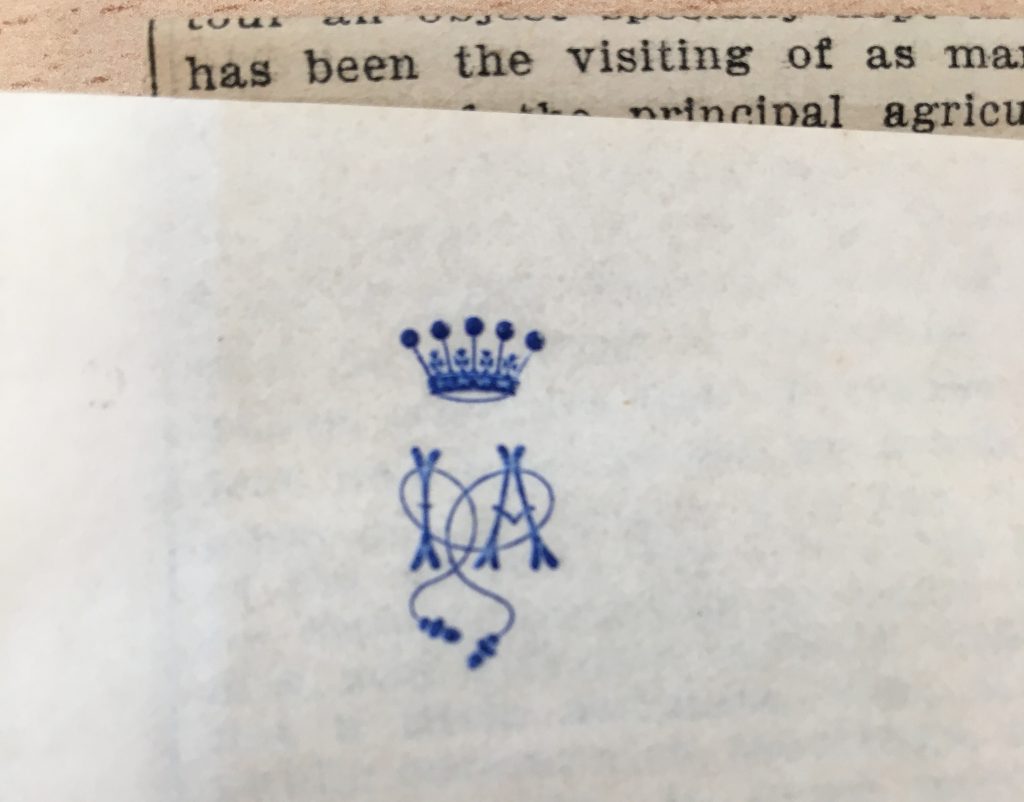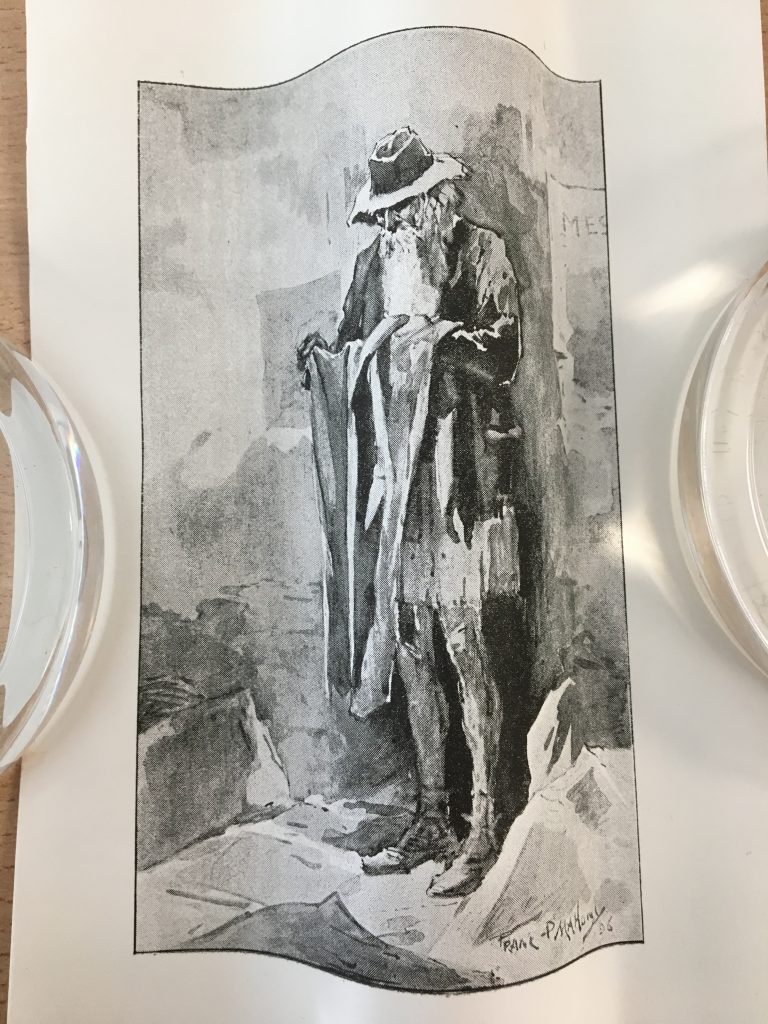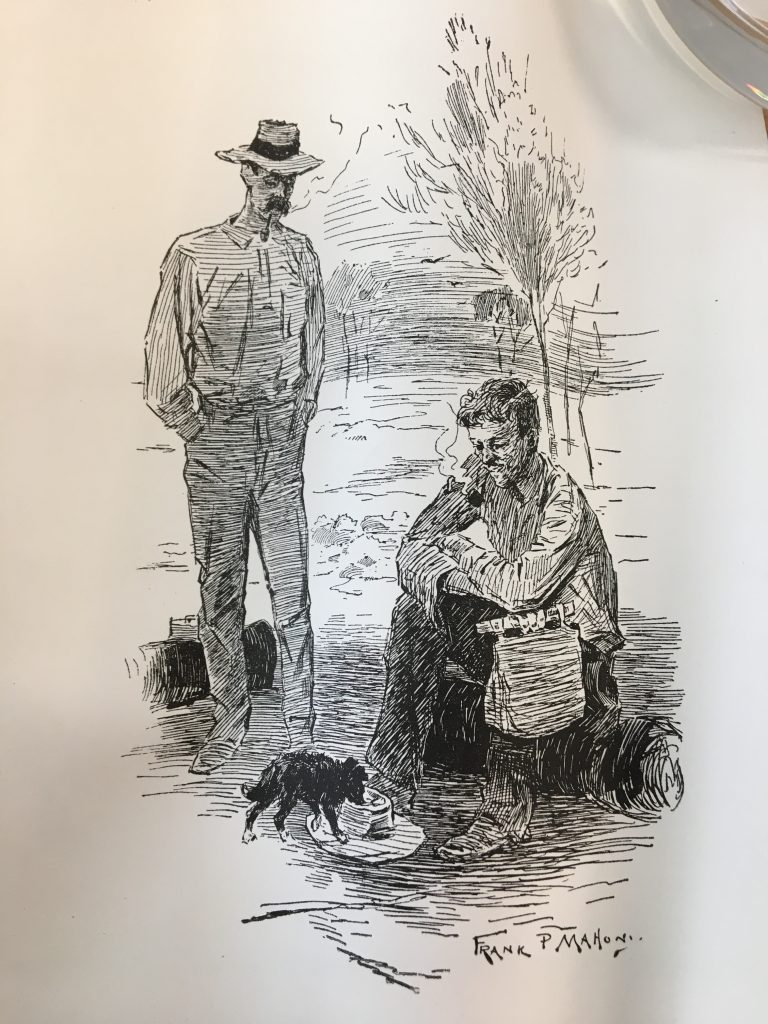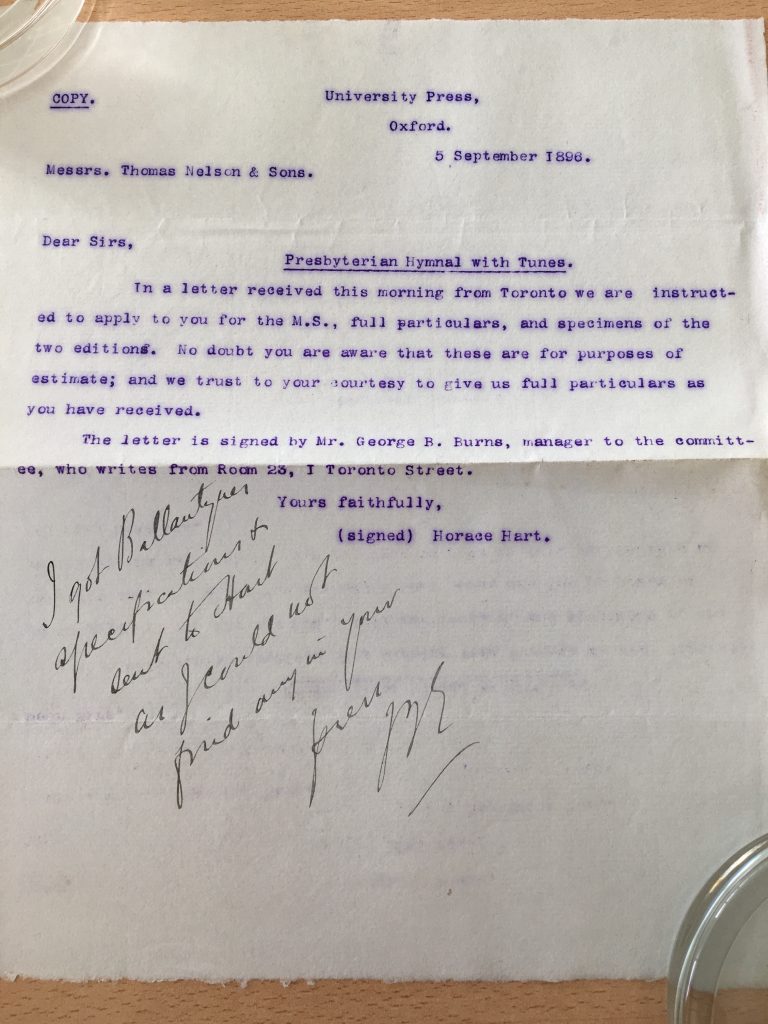Cataloguing the correspondence of Thomas Nelson & Sons
Last January, our intern Isabella started a 10-week placement at the CRC, as part of her MSc in Book History and Material Culture. Using our online system ArchivesSpace, she is cataloguing part of the records of Thomas Nelsons & Sons Ltd., a British publishing firm founded in Edinburgh in 1798. So far, she has been dealing with correspondence, advertising material, and printed material relating to publishing, all dating from the end of the 19th century. Here are some of her most interesting finds:

1. W. H. Allen & Co. Copy
1. W. H. Allen & Co.: Pictured above is a beautiful embossing from the stationary of W. H. Allen & Co. Ltd., a London based bookseller and publisher. The company were ‘publishers to the India office’ as can be noted on the seal. The coordination of a lion and a unicorn most likely represents the company’s work across Scotland and England.
2. There are three letters from one Mrs. Allan enquiring about the potential for her 15 year old son to take up an apprenticeship with Nelson & Sons. She describes her son as being a naturally gifted illustrator and when the company takes a bit long to reply she sends further letters describing how she and her son are ‘wearing of waiting’ for a response. Though the company eventually accepted samples of the young Mr. Allan’s work, he was not offered an apprentice position.

3. Lady Aberdeen Insignia
3. Lady Aberdeen Insignia: Pictured above is the signet of Lady Ishbel Aberdeen who wrote to the offices of Nelson & Sons on September 14th 1896, sending several copies of Canadian literary reports and magazines as well as personal letters inquiring as to whether the company would wish to send any penny or bargain literature they may have the copyrights for to Canada as she believes the country is in desperate need of ‘good, cheap literature.’ She speaks about her children’s magazine “Wee Willie Winkie” named after the Scottish fairy tale as well as the National Council of Women of Canada (NCWC). Lady Aberdeen was the founder of the NCWC, an advocate for the creation of the Victorian Order of Nurses as well as a well-known supporter of the Canadian suffrage movement. The signet is a blue embossed crown containing her initials wrapped together with a vine-esque tie (information on Lady Aberdeen acquired via the Canadian Encyclopaedia).

4. Frank Mahony (1)

4. Frank Mahony (2)

4. Frank Mahony (3)

4. Frank Mahony (4)

4. Frank Mahony (5)

4. Frank Mahony (6)
4. Frank Mahony: Pictured above are six printed illustrations from illustrator Frank P. Mahony. Mahony was an artist from Melbourne Australia whose work was used in the construction of the ‘New South Wales Reader’ a larger and heavily documented project undertaken by Nelson & Sons transcontinentally in congress with several agencies in Australia including leather workers, booksellers, and authors. As can be seen, the copies of the illustrations have been warped from years of being curled into a scroll-esque form at the centre of a group of letters and cost projections for the ‘New South Wales Reader.’ In order to examine each paper with minimal damage, two glass weights are placed at the edges of the copy pictures to examine them as a whole without compromising the form the paper has taken over years of storage.

5. Oxford University Press
5. Oxford University Press: This letter addressed to Nelson & Sons is a copy of a letter from the University Press of Oxford requesting manuscript materials for the Presbyterian Hymnal with Tunes, a project which was spearheaded by Reverend James Anderson of Toronto. The initial correspondence regarding the publication of the Presbyterian Hymnal between Reverend Anderson and George Brown of Nelson & Sons deals mostly in obtaining or paying license for the use of tunes from other previously published hymnals. The various letters sent between the two men gives a glimpse into the nature of musical copyright laws and penalties in 1896 both in Canada, where the Reverend Anderson was based and in Scotland where Nelson & Sons offices were. The publication of the hymnal went on to be so successful that the University Press of Oxford requested to take up the publication of the piece as well.

6. Schwebius signature
6. Schwebius letter: Much of the cataloguing done for this archive requires some previous exposure to palaeography, or the study of dated handwriting. However, sometimes in deciphering particularly unclear script a second opinion or cross referencing is required to confirm the context of a letter in order to properly interpret the piece. For this letter, the name Schwebius, though written twice, was not entirely apparent in its spelling. The content of the letter referred to the sale of a foundry and various machines from a leatherworker in New York. The cataloguer referred to a digitized directory from the library of Hoboken, New York which not only lists the recipient of this letter, a George Schwebius, but mentions details of his business which were substantiated by the letter from the Nelson Archive. Corroborating information across archives and databases allowed not only for the correct spelling of the sender’s name to be identified but gave further insight into the transactions between the sender and Nelson & Sons.

7. George Brown’s signature
7. George Brown’s Signature: In 1896 Nelson & Sons decided to invest several substantial sums which were guaranteed by an American investment firm. Their correspondence with the American firm was directed to a Mr. Stewart Tods and concerned the investment of two separate sums of more than 10,000 dollars each. The letter, though entirely concerned with business, reflects the genial nature of professional signatures from the time. Here George Brown, a manager at Nelson & Sons, signs ‘Believe me, Yours Faithfully’. Though the letter concerns references to significant sums of money and is a reflection of a transaction, the signature is incredibly genial and far more affectionate than would be used in the same manner of business today.
8. Nelson & Sons employed a vast number of employees who all were integral to discovering, creating, and marketing literature. From travel writers to leather testers, Nelson & Sons often employed numerous professionals to vet their literature including Jane Macgregor and Jane Borthwick. Though each women worked with the company under other supervisions at various periods, Jane Borthwick was a translator of German hymns as well as a writer of English hymns, a collection of letters in this archive reveals that these two women were also engaged as test readers for the manuscripts sent to the company. Many of the letters sent by Borthwick and Macgregor reference literature they have been sent which contains female protagonists, from which it could be inferred that Nelson & Sons were recruiting female employees for female driven literature.
The Thomas Nelson collection (Coll-25) on our online catalogue: https://archives.collections.ed.ac.uk/repositories/2/resources/85801